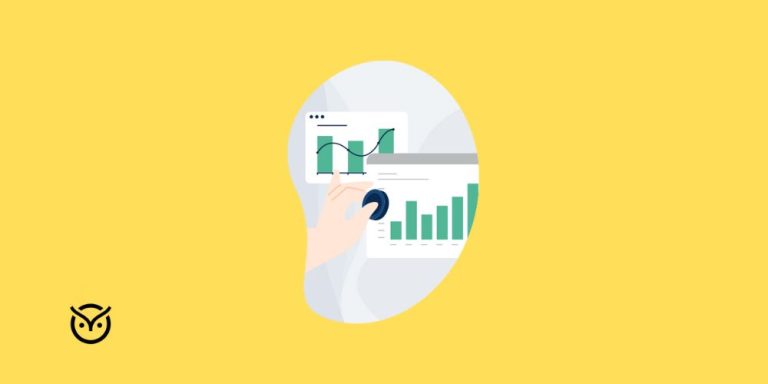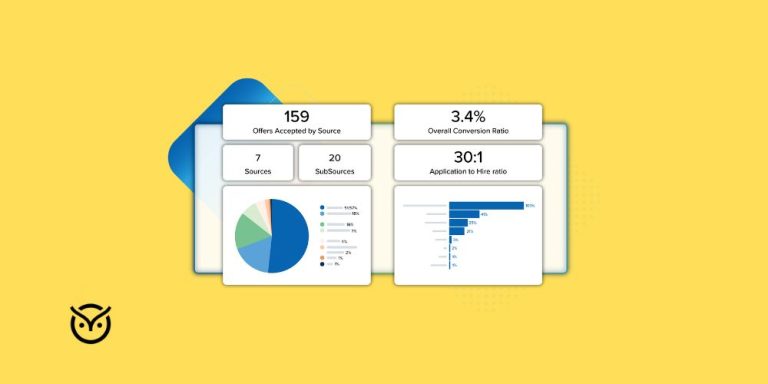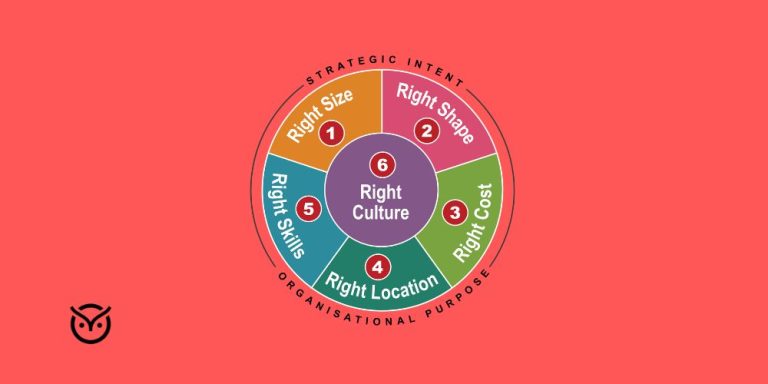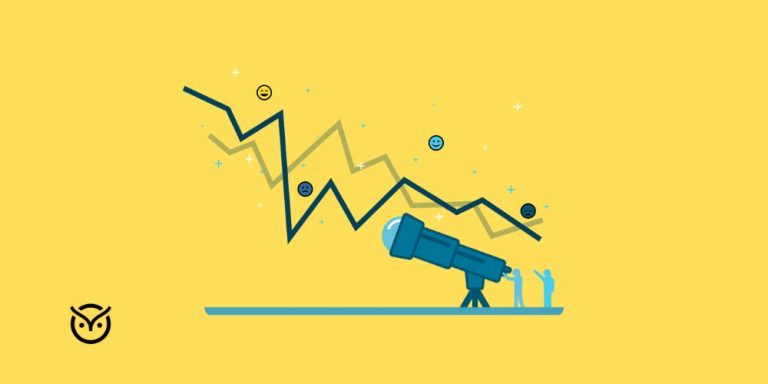Data-Driven Recruitment: How to Hire Smarter?

TL;DR
- Data-driven hiring uses metrics to make better recruitment decisions
- Key data includes candidate info, internal talent, funnel metrics, and diversity stats
- Use tools like ATS and talent intelligence platforms to gather insights
- Data improves speed, quality, and fairness in hiring
- Set clear goals, track KPIs, and use AI to predict and plan smarter hiring moves
Hiring today isn’t just about instincts—it’s about insights. In fact, companies that adopt data-driven recruitment practices are three times more likely to improve their hiring efficiency and quality, according to LinkedIn’s Global Talent Trends report.
Ever made a hiring call and later thought, “The signs were there”? Most of the time, they were in the data. Metrics like time-to-fill, cost-per-hire, and candidate engagement aren’t just numbers. They tell a story. In this blog, we’ll walk through how data-driven recruitment works, what kinds of insights you can use, and how it all helps you hire better, faster, and more fairly.
Hiring by Instinct vs. Hiring by Insight
What is Data-Driven Recruitment?

Data-driven recruitment is all about using facts, not gut feelings, to make better hiring decisions. Instead of guessing who might be the best fit, recruiters turn to data and insights from different sources at every step of the process.
Hiring can get messy fast, with lots of moving parts and decisions to make. That’s where data helps. It brings clarity and helps hiring managers stay focused on what really matters, which is building the right team with the right skills.
Thanks to modern HR tools—like Applicant Tracking Systems (ATS) and candidate assessment platforms—it’s easier than ever to collect and use this data. These tools help turn numbers and feedback into real insights.
By pulling from sources like interview scores, resumes, and even social media activity, teams can cut down on time-to-hire, find stronger candidates, and reduce bias, making the whole process fairer and more effective.
What Types of Data Can You Use in Recruiting?

Data-driven recruitment isn’t just about numbers, it’s about using the right information to make smarter hiring decisions. Let’s break down the kinds of data that can truly help you hire smarter and build better teams.
Internal Workforce Data
Great hires can come from within. By analyzing data on your current employees like their experience, skills, and career goals, you can spot opportunities for internal mobility, boost retention, and fill skill gaps more effectively.
Candidate Data
This is the foundation of any good hiring strategy. It covers everything from a candidate’s work history and job titles to their skills, certifications, and education. With modern recruiting tools, you can go beyond reading resumes; you can filter, sort, and analyze this data to quickly spot the right people for the role.
Competitor Insights
Competitor data can reveal gaps in your own team and help you craft personalized outreach messages that get the attention of top passive candidates.
Recruitment Funnel Analytics
Tracking your hiring funnel helps you spot what’s working and what’s not. Look at:
- Time to Hire: How long does it take from first contact to accepted offer?
- Velocity: How quickly candidates move through each hiring stage.
- Conversion Rates: How many applicants make it from screening to interviews, and interviews to offers?
Diversity Metrics
More companies are aiming to improve diversity, equity, inclusion, and belonging (DEIB), but it’s hard to do that without solid data. AI-powered tools can help you infer diversity traits, even when they’re not explicitly stated, so you can build a more inclusive talent pipeline.
What Types of Data Can You Use in Recruiting?
How to Find and Collect the Right Hiring Data

One of the toughest parts of hiring today is trying to make sense of recruitment data that’s all over the place. It lives in your HR software, your ATS, your learning platforms, and even spots like LinkedIn or GitHub. When everything’s spread out, it’s tough to see the full picture.
Thankfully, most of the insights you need come from two main places:
- Talent Intelligence Platforms: These tools help you dig deeper into things like talent pool trends, what competitors are doing, and how diverse your pipeline really is. Many even pull data from public sources like GitHub.
- Your Applicant Tracking System (ATS): This gives you a clear view of how candidates move through each stage of your hiring process.
How to Find and Collect the Right Hiring Data
Q1: Where do you typically find time-to-hire data?
Q2: Which tool best tracks passive candidate activity?
Q3: Where is interview feedback most commonly stored?
How Data-Driven Recruitment Elevates Your Talent Strategy

If you’re serious about improving your hiring approach, guesswork won’t get you far. The teams that see real results are the ones using recruitment data to guide every step. They gather the right info, make sense of it, and turn it into smarter hiring moves. Here’s what that looks like.
Shape Smarter Hiring Strategies
Data helps you move from guesswork to a game plan. With access to insights about candidate pipelines, skills availability, and even where your competitors are hiring, you can build recruitment strategies that are tailored and targeted.
Let’s say your company is exploring a second office location for a growing engineering team. Instead of picking a city at random, data tools can help you pinpoint where the most qualified engineers are located, so you’re building a team where the talent already exists.
Build Stronger Partnerships With Hiring Managers
Gone are the days when recruiters were just order takers, tasked with filling seats as fast as possible. With data in hand, recruiters can now lead conversations with hiring managers, advising them on market realities and shaping what the “ideal” candidate actually looks like.
For instance, if a hiring manager asks for a unicorn with ten niche skills, you can pull up real-time data to show how rare that profile is—and offer smarter, more realistic options.
Find Higher-Quality Candidates
The right data doesn’t just help you hire faster—it helps you hire better. You can identify candidates who aren’t just qualified on paper but have the right adjacent skills or hard-to-find certifications that would be missed in a traditional search.
And instead of bouncing between tools and spreadsheets, talent intelligence platforms bring all that information together—sometimes even using AI to highlight qualifications candidates don’t list outright, like security clearances.
Spot and Fix Process Gaps
Recruitment data can answer critical questions like:
- Is our diversity hiring getting better?
- Are we responding to candidates quickly enough?
- Where do most candidates drop off in our process?
Without data, it’s tough to answer these. But there are many tools that can give you a full view of your funnel, from outreach to offer, so you can identify bottlenecks and streamline the process at every step.
Save Time and Boost Productivity
Recruiters are under pressure to move fast, and data can help. Instead of starting every search from scratch, you can re-engage past applicants or silver medalists who already know your brand.
Show Business Impact
If you want leadership buy-in, speak their language. Data helps you tie recruitment success directly to business outcomes, like faster time to hire, better quality talent, and long-term retention.
When you use analytics to show how recruiting decisions are driving results, you’re not just seen as a recruiter. You’re seen as a strategic partner helping to shape the future of the business.
How Data-Driven Recruitment Elevates Your Talent Strategy
Start by choosing your hiring goal:
How to Put Data-Driven Recruitment into Action

Making your recruitment strategy data-driven doesn’t have to be daunting.
By being deliberate and cautious, you can use data to automate the hiring process, make more accurate decisions, and ultimately secure better candidates faster.
Here’s how you can begin implementing data-driven recruitment.
Define Recruitment Goals and Metrics
If you don’t know what you’re aiming for, it’s easy to get lost. The best hiring plans start with simple goals. What roles matter most right now? What does a great hire actually look like for your team? Figure that out first, then decide how you’ll measure success. Otherwise, you’re just guessing.
- What do we want to achieve? (e.g., faster hiring, better hires, lower costs, higher retention)
- How will we measure progress?
- Time to hire – How quickly are roles getting filled?
- Quality of hire – Are new team members meeting expectations and sticking around?
- Cost per hire – What’s the full expense of bringing one person on board?
- Retention – Are your hires still there after 6 to 12 months?
Take Advantage of Recruitment Technology
Hiring today isn’t about sorting stacks of resumes by hand. It’s about using smart tools that keep things moving and organized. These platforms help you:
- Keep track of everything – from resumes and feedback to candidate notes, all in one place.
- Follow the process – know exactly who’s in the interview phase and who’s waiting on an offer.
- Check real skills – not just what’s on paper, but how well someone solves problems or works with others.
It’s not just about working faster. It’s about making fewer mistakes and making sure the right people don’t get overlooked.
Collect and Analyze Recruitment Data
Data is your secret weapon. Collect details at every stage of hiring:
- Candidate demographics: Age, location, background (to track diversity goals).
- Source of hire: Which job boards, referrals, or social platforms bring in top talent?
- Interview outcomes: Feedback, scores, and reasons for rejection.
- Funnel metrics: How many applicants move from screening → interview → offer?
Store this data in a centralized system (like an ATS or HRIS) so it’s easy to access and analyze.
Analyze Data for Insights
Data alone won’t fix your hiring—it’s what you do with it that matters. Look for patterns like:
- Top sourcing channels: Does LinkedIn outperform Instagram for your roles?
- Drop-off points: Are candidates ghosting you after the second interview? Why?
- Cost drivers: Is your spend ballooning due to agency fees or lengthy processes?
Use these insights to tweak your strategy. For example, if referrals lead to longer-lasting hires, invest in employee referral programs.
Incorporate Predictive Analytics and AI
AI isn’t here to replace recruiters—it’s here to make you a superhero. Here’s how:
- Resume screening: AI scans hundreds of resumes in minutes, flagging candidates with the right skills (tools like iMocha’s skills platform even test coding or sales abilities).
- Candidate matching: Predict which applicants will thrive based on their experience and traits.
- Workforce planning: Predictive analytics forecasts future hiring needs (e.g., “We’ll need 20 developers next quarter”).
This tech speeds up hiring while reducing bias and guesswork.
Create Standardized Recruitment Processes
Consistency is key to fairness and accuracy. Standardize your process by:
- Structured interviews: Ask every candidate for the same role the same questions (e.g., “Tell me about a time you handled a conflict”).
- Uniform scoring: Rate answers on a scale (e.g., 1–5) to compare candidates objectively.
- Centralized data: Use templates to collect and store info the same way every time.
This makes it easier to spot trends, avoid bias, and ensure every hire aligns with your goals.
Continuously Monitor and Improve
A data-driven strategy is never “done.” Keep refining it by:
- Tracking KPIs monthly: Are time-to-hire or cost-per-hire improving?
- Gathering feedback: Ask candidates, “What worked? What felt slow?”
- Benchmarking: Compare your metrics to industry standards (e.g., “Our retention rate is 10% below average—let’s fix that”).
Adjust as you go. For example, if candidates complain about slow response times, set a rule: “Reply within 48 hours at every stage.”
Conclusion
Data-driven hiring is far more than a buzzword; it’s revolutionizing the way we recruit. When you’re using data for hiring, you’re not only saving time, you’re making decisions that build better, more efficient teams.
It’s not about just filling seats anymore. By embracing data, you’re making choices that actually sync up with where your company is headed long-term. Once you weave data into your hiring process, you’ll see the difference—it’s not just about finding people, it’s about finding the right people.






